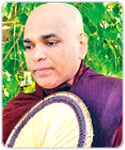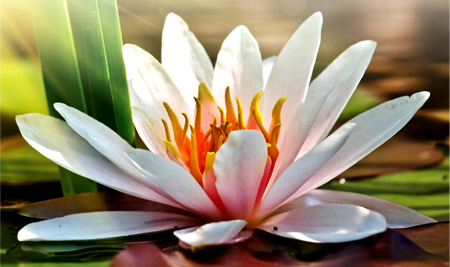|
Path to Nibbana: Be aware of Five Hindrances - 4:
Doubt
 Battaramulla Battaramulla
Siri Sudassanarama
sadaham senasuna
Ven. Dr. Mirisse Dhammika thero
" Frustration and anger or helplessness may arise when a person in doubt becomes
impatient for not having a clear direction to go. But such agitation of the mind
only compounds the difficultly."
 Venerable Thera Gunaratana likens doubt to being lost in the desert: “It is the
feeling of a man stumbling through a desert and arriving at an unmarked
crossroad. Which road should he take? Venerable Thera Gunaratana likens doubt to being lost in the desert: “It is the
feeling of a man stumbling through a desert and arriving at an unmarked
crossroad. Which road should he take?
There is no way to tell. So he just stands there vacillating: When one
experiences doubt, the mind is “foggy and cloudy”. A student who has doubts
about the value of going to school cannot focus his attention on his schoolwork.
He will lack confidence and direction. also, meditator is unable to continue his
or her way due to lack of confidence.
Frustration and anger or helplessness may arise when a person in doubt becomes
impatient for not having a clear direction to go. But such agitation of the mind
only compounds the difficultly. Externally imposed directions and actions do not
treat the problems in its root. Only clarity of the mind brought about by
insight and understanding resolves it. Therefore, the most helpful thing to do
is the mindfulness practice that settles down the agitated mind so that it can
look into the nature of one’s doubt and indecision more clearly. These five
hindrances described above are the distractions of the mind, and pull the mind
off balance and create problems for people. The approach one should take to
these hindrances is to be mindful of them. These hindrances arise because of the
past conditioning of the mind, and by not being carefully and skillfully
trained. The mind is unable to engage with the present moment; it jumps all
over, keeps running off to fantasies and desires, and is easily distracted and
frustrated. The first basic thing to do with such a state of mind is to just
become aware of the mental objects without suppressing them or indulging in
them. This nonattached awareness is the first step of
mindfulness training. Mindfulness cultivates the capability of recognizing when
the hindrances are present. Then the student can try to apprehend, to learn how
these particular energies affect the mind and body. Investigating and opening
the mind in this way, one becomes better at recognizing these energies earlier
and more often, understanding them, and is able to allow them to pass away more
easily. |